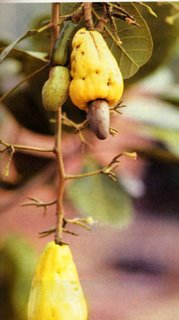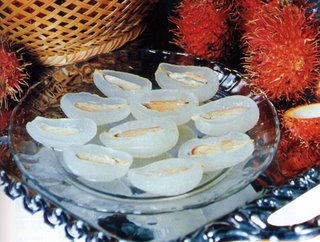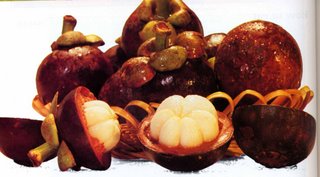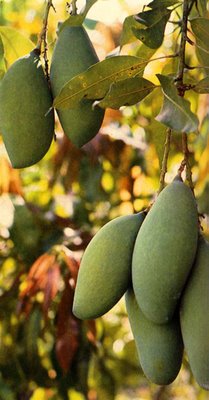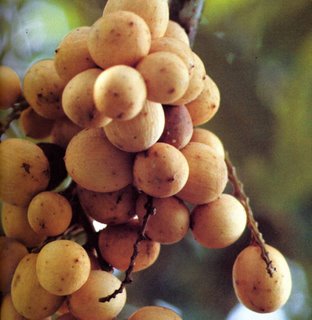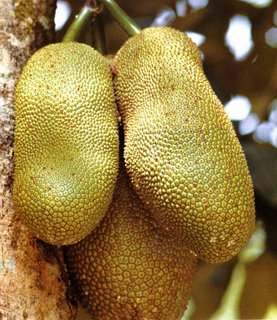
TROPICAL FRUITS
NUTMEG (Myristica Fragrans)
The nutmeg or, as is known locally, buah pala is grown mainly in Penang. The fruits introduced to Penang in the early 1800’s from the Moluccas by spice trade. It is a bushy tree reaching 9 meters in height. The plant is usually propagated from seed and is planted at a recommended distance is about 125 plants per hectare. The tree will bear fruits between 5 to 6 years after planting. And the fruits can be harvested six months after flowering. However, in order to have a more matured fruit and to have the seed well formed the fruit is normally harvested nine months after flowering. The nutmeg seed is mainly used as a spice for flowering in foods and in the manufacture perfumes, soaps, hair tonics and even dentifrices. The oil from the seed is also used for medicinal purpose particularly as an external application for ill s such as indigestion. In Penang, the fleshy pericarp of the fruit is normally pickled and sweetened and sold as a titbit. A good tree produces about 1,500 to 2,000 fruits a year. However, the yields depends on the age of the tree with the tree with the yield reaching up to as much as 8,000 kilograms per hectare when the tree reaches 40.
How to Eat
Wash the whole fruits. Cut them into two halves and remove the seeds or stones. The meat or the endocarp are then soak in 1% citric acid solution for 24 hours. Remove the acid solution and wash them with plain water. Then soak them in a 10% salt solution (with 700 ppm of sodium metabilsulphate). Peel of the outer skin of the pericap. Soak the white fleshy pericap into 0.4%$ brix to 50% brix sugar solution for one week before they can be eaten.
The stones of seeds are normally dried and used as spices in small quantities. The net-like covering surrounding the stones is also dried for use as spices.
TROPICAL FRUITS

